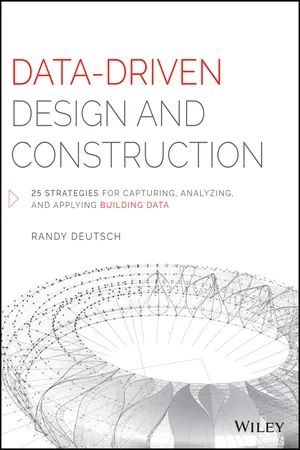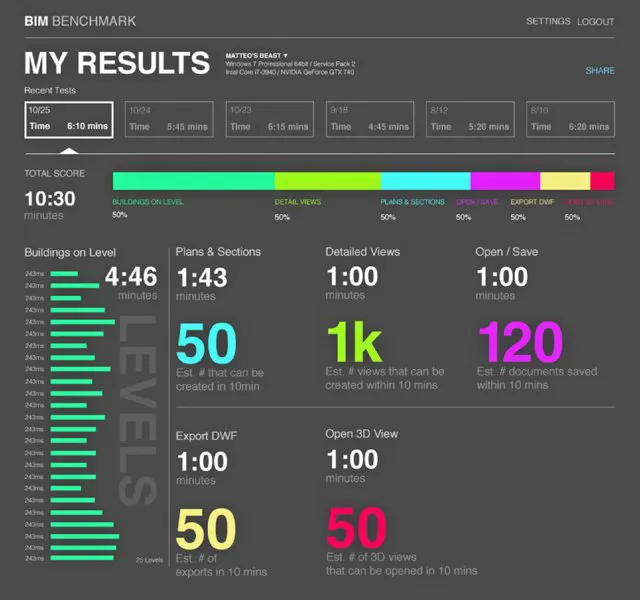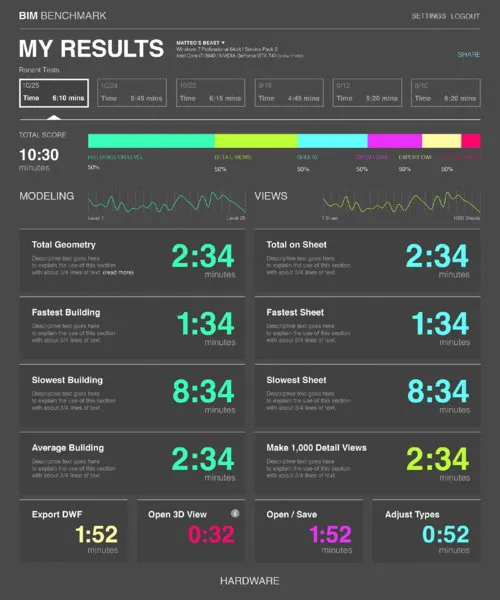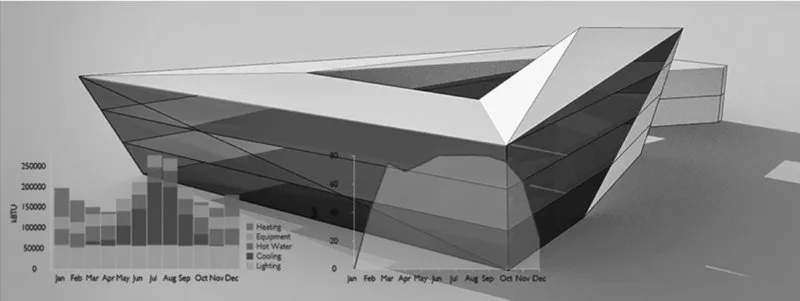
Data-Driven Design and Construction
25 Strategies for Capturing, Analyzing and Applying Building Data
- English
- ePUB (mobile friendly)
- Available on iOS & Android
Data-Driven Design and Construction
25 Strategies for Capturing, Analyzing and Applying Building Data
About this book
"In this comprehensive book, Professor Randy Deutsch has unlocked and laid bare the twenty-first century codice nascosto of architecture. It is data. Big data. Data as driver...This book offers us the chance to become informed and knowledgeable pursuers of data and the opportunities it offers to making architecture a wonderful, useful, and smart art form."
—From the Foreword by James Timberlake, FAIA
Written for architects, engineers, contractors, owners, and educators, and based on today's technology and practices, Data-Driven Design and Construction: 25 Strategies for Capturing, Applying and Analyzing Building Data
- addresses how innovative individuals and firms are using data to remain competitive while advancing their practices.
- seeks to address and rectify a gap in our learning, by explaining to architects, engineers, contractors and owners—and students of these fields—how to acquire and use data to make more informed decisions.
- documents how data-driven design is the new frontier of the convergence between BIM and architectural computational analyses and associated tools.
- is a book of adaptable strategies you and your organization can apply today to make the most of the data you have at your fingertips.
Data-Driven Design and Construction was written to help design practitioners and their project teams make better use of BIM, and leverage data throughout the building lifecycle.
Frequently asked questions
- Essential is ideal for learners and professionals who enjoy exploring a wide range of subjects. Access the Essential Library with 800,000+ trusted titles and best-sellers across business, personal growth, and the humanities. Includes unlimited reading time and Standard Read Aloud voice.
- Complete: Perfect for advanced learners and researchers needing full, unrestricted access. Unlock 1.4M+ books across hundreds of subjects, including academic and specialized titles. The Complete Plan also includes advanced features like Premium Read Aloud and Research Assistant.
Please note we cannot support devices running on iOS 13 and Android 7 or earlier. Learn more about using the app.
Information
part I
Why Data, Why Now?
We are in a race now to produce better and better information, instead of better and better buildings.—Paul Fletcher
Data-Informed Decision-Making
chapter 1
The Data Turn
Model quality is certainly improving, but we are still not seeing enough valuable embedded data.—David W. Light
Five Factors Leading to the Leveraging of Data and Industry Change
Technology




Strategy No. 3: Look Outside the Industry
Table of contents
- Cover
- Titlepage
- Copyright
- Dedication
- Epigraph
- Foreword
- Preface
- Acknowledgments
- Introduction: Measuring the Immeasurable, Validating the Ineffable
- Part I: Why Data, Why Now?
- Part II: Capturing, Analyzing and Applying Building Data
- Part III: What Data Means for You, Your Firm, Profession, and Industry
- Epilogue: The Future of Data in AEC
- Appendix
- Index
- EULA